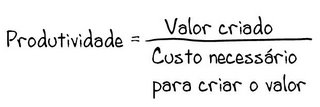Frank Knight, na sua obra "Risk, Uncertainty and Profit" (1921), distingue risco de incerteza da seguinte forma:
- Risco refere-se a situações em que os resultados futuros são desconhecidos, mas podem ser calculados com base em probabilidades objectivas. Ou seja, é possível quantificar o risco com base em dados históricos ou modelos estatísticos (ex.: seguros, apostas, mercados financeiros).
- Incerteza, por outro lado, ocorre quando os resultados futuros são desconhecidos e não podem ser quantificados com probabilidades objectivas. Não há dados suficientes para calcular probabilidades precisas, tornando a tomada de decisão mais difícil (ex.: inovações disruptivas, mudanças políticas imprevistas).
"Nothing is certain under the sun. Our knowledge of the world - or our future wants - is incomplete and fallible. Nor can we be sure about others' opinions or wants. We can only imagine. Yet resolute action requires confidence in our individual and collective choices. Where does confidence come from, especially when we imagine something new? How do we justify judgments prone to mistake and disagreement?...Briefly, Knight's 1921 book Risk, Uncertainty and Profit distinguished uncertainty from risk thus: Risk can be objectively calculated from historical statistics (as in constructing life expectancy tables) or from probability theory (like the chance of successive "heads" in a coin toss). Knight defined uncertainty by exclusion - as situations when we cannot calculate probabilities from statistical distributions or mathematical laws....Knight's definition of uncertainty as the absence of calculable risks has immediate intuitive appeal, but this definition has also become a reason for its neglect. Most real - world situations and problems - which dish to order in a new restaurant, for example - don't naturally map into statistical distributions or mathematical calculations....mainstream economic theories now make no distinction between "probability situations" that are, in Knight's words, "to a high degree unique" and those that are not. Uncertainty is banished to the unexaminable, occult world of unknown unknowns....Uncertainty is thus a personal ("subjective") mental state that covers future events that no one can observe before they occur. Doubts can also pertain to ignorance of existing or past conditions....Knight's 1921 book distinguished between uncertainty and risk for a reason: to propose that true profit requires bearing (taking "responsibility" for) uncertainty rather than risk. In Knight's theory, providing capital for risks that can be calculated from the laws of probability or statistical tables only earns the going market rate for risk-bearing. (Conceptually, according to Knight, the market rate of return must be excluded from true profit, although no one actually does this.) Moreover, responsibility for uncertainty is an entrepreneurial function, and the return for performing this function is the source of an entrepreneur's profit. Although I find Knight's "no-uncertainty, no-profit" thesis appealing, I see little hope of its acceptance in mainstream economics."

%2015.30.jpeg)
%2018.08.jpeg)
%2006.21.jpeg)












